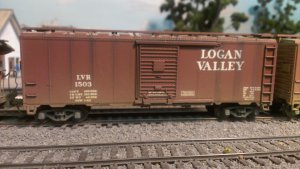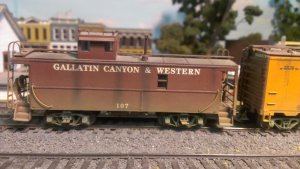When I weather a car or engine it typically goes like this.
Apply India ink wash, seal with krylon matte finish, apply earth tone acrylic wash, seal with matte finish, apply any rust, seal again, apply any graffiti, apply more weathering, seal again. Paint the trucks and wheels multiple times and seal between layers. What you wanna do is build up layers of paint just like the cars ( or buildings) build up layers of weathering through time. It may take a couple days of work to complete one car, building etc but the end product is worth it. And the great thing about washes is that they are easy to remove if you're not happy with the result. Once the layer is sealed things become more dicey but still doable. I actually just stripped a Milwaukee road covered hopper because I'm not happy with how it turned out.



